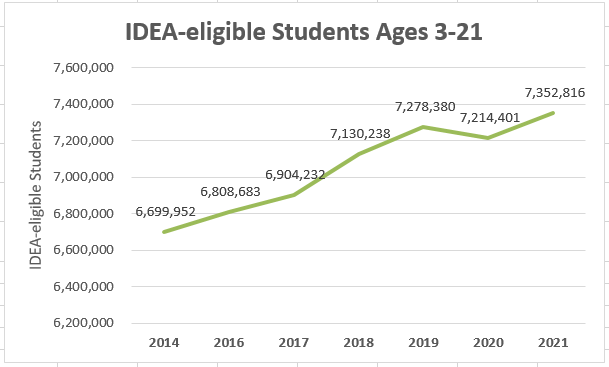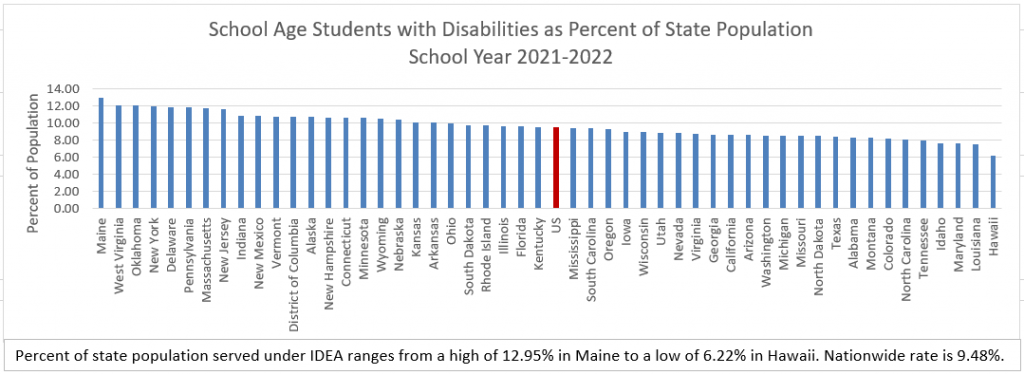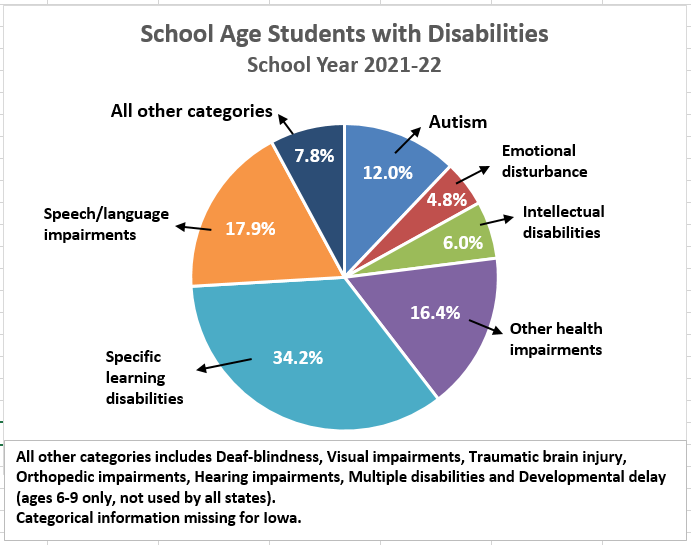Comment on Your State’s Application for IDEA Part B Federal Funds for FFY 2023
States are required to submit an annual application for Federal funds to the U.S. Dept. of Education (ED) in order to be eligible to receive their IDEA Part B Federal funds.
States must make their FFY 2023 IDEA Part B applications for Federal funds available to the public at least 60 days prior to submission to ED’s Office of Special Education Programs (due by May 24, 2023), accept public comment for at least 30 days, review and consider all public comments and make any necessary modifications to the application or policies and procedures, as appropriate. This means applications should be posted to SEA websites by March 24, 2023.
Through these applications, states must make a number of “assurances” regarding compliance with IDEA including assuring FAPE is available to all identified students, services are provided in the least restrictive environment (LRE) to the maximum extent practicable, identifying significant disproportionality and many more! States must also provide information on their maintenance of state financial support as well as a list of state special education rule, regulation, or policy that are State-imposed requirement and not required by Part B of the Act and Federal regulations.
More information about the annual application is available in the following documents:
- ED Memo to states: https://sites.ed.gov/idea/files/Grants-Part-B-FFY-2023-Procedures-for-Receiving-a-Grant-Award.pdf
- ED Instructions to states: https://sites.ed.gov/idea/files/Grants-Part-B-FFY-2023-Instructions.pdf
- Application template: https://sites.ed.gov/idea/files/Grants-Part-B-FFY-2023-Application-Template.docx
- Technical Assistance Checklist: https://sites.ed.gov/idea/files/Grants-Part-B-FFY-2023-Technical-Asssistance-Checklist.pdf
Find your state’s application by visiting your state’s dept. of education special education section.
Below are some documents that can assist in compiling comments to your state application:
2022 State Performance Plan/Annual Performance Report (SPP/APR). Download your state’s latest Part B SPP/APR here. Examine the performance of your state on key indicators such as graduation rate, drop-out rate, performance on annual state assessments. Question low performance on these indicators and if performance equates to FAPE as required by Assurances 1 and 2.
SPP/APR Targets.
Our series of Special Reports can be used to determine the rigor that your state’s targets on key performance indicators. Question targets that seek to achieve little if any improvement.
Annual Determinations.
Check the rating that your state has received over the past years as determined by the annual determination made by the Office of Special Education Programs. The latest determinations are available in this blog. Ratings for 2014 through 2022 are available here. The Results Matrix (a PDF appended to the end of your state’s SPP/APR) provides details on how the rating was determined.
Dispute Resolution Data.
Encourage your state to use dispute resolution data as suggested in this document:
Five Ways to Effectively Use Dispute Resolution Data in State General Supervision Systems to Improve Implementation of IDEA and to make state complaint reports available to the public if they do not currently do so.



